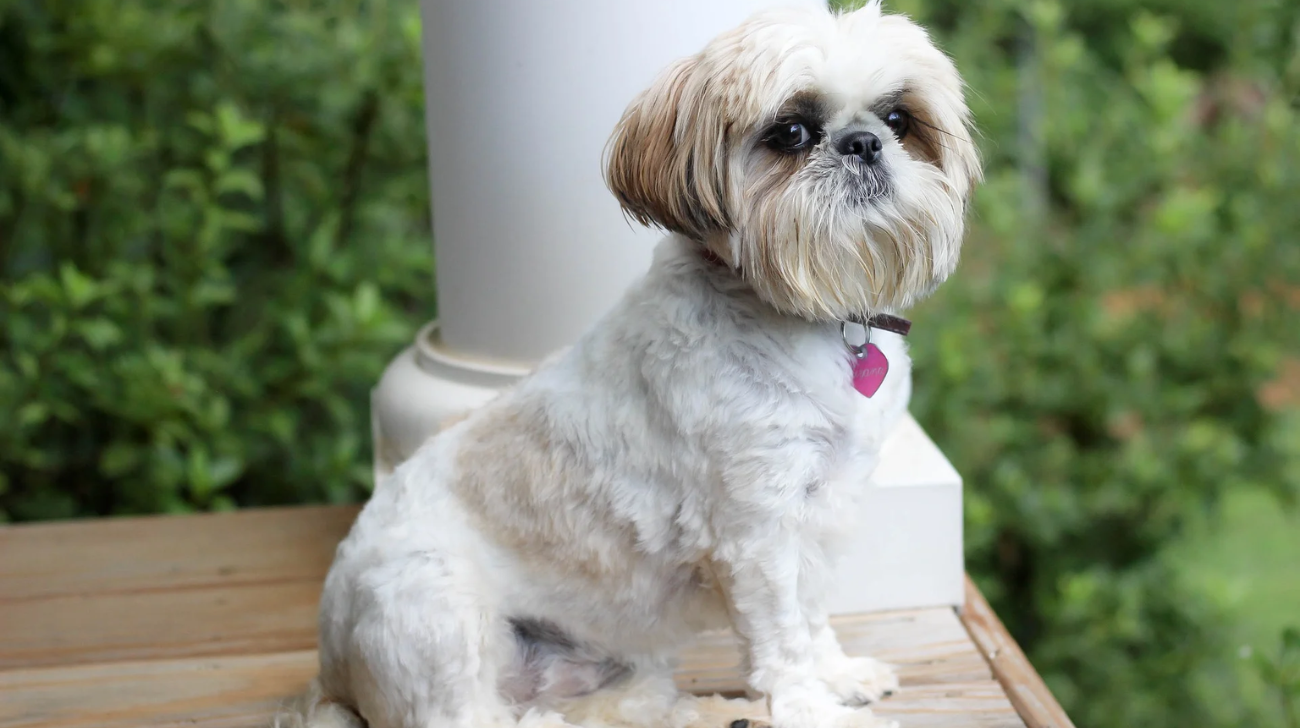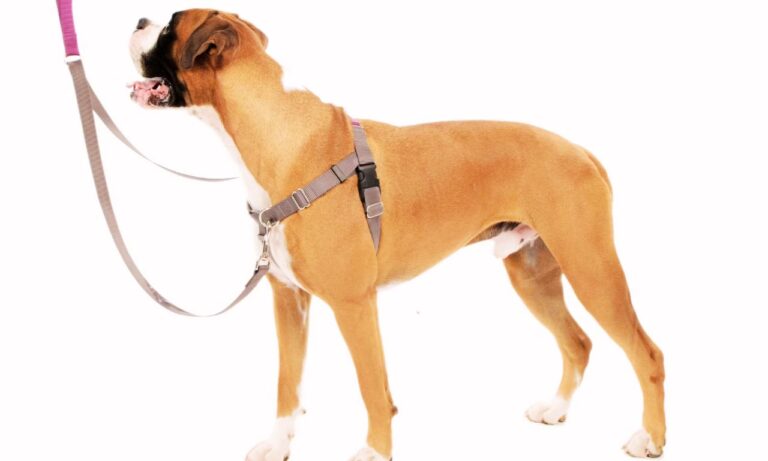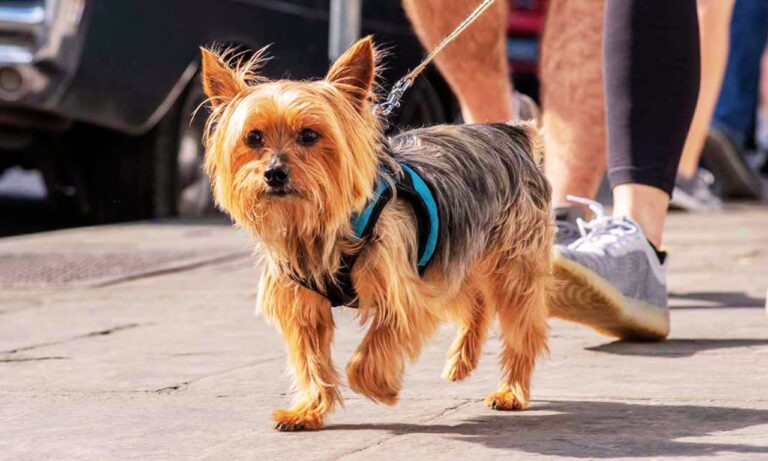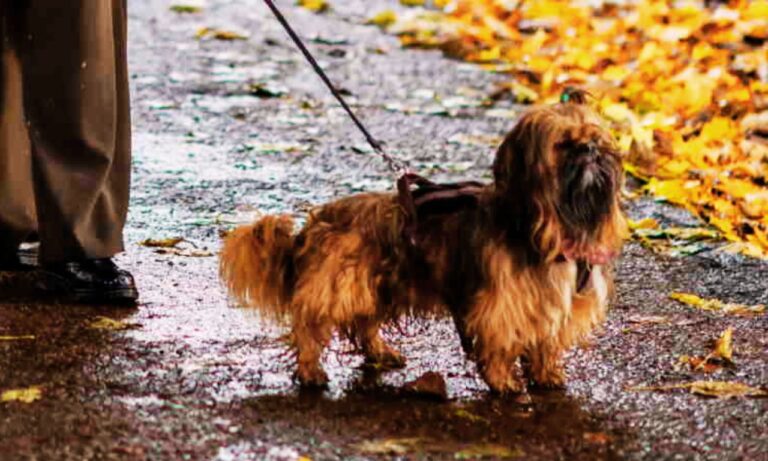Shih Tzus are adorable, affectionate, and relatively small dogs with long, luxurious coats. However, their delicate neck structure and small size require special care when selecting and wearing collars. Properly fitted collars are essential for safety, identification, and leash training, but choosing the wrong collar can cause discomfort or even injury. So, how to wear collars on Shih Tzu?
In this detailed guide, we will discuss the types of collars best suited for Shih Tzus, how to fit them correctly, practical tips for wearing them safely, and essential insights backed by data to keep your dog comfortable and secure. For detailed guidance on selecting the correct collar size for a Belgian Shepherd, this article provides essential tips to ensure your dog’s comfort and safety.
Blog Highlights
ToggleQuick FAQs: How to Wear Collars on Shih Tzus
Why Does Your Shih Tzu Need a Collar?
Collars are not just fashion accessories for Shih Tzus—they play essential roles in training, safety, and identification. Even though they are a small breed, proper collars help in the following ways:

- Control During Walks: While Shih Tzus are generally friendly, collars are helpful when guiding them outdoors.
- Training and Behavior Management: A lightweight collar can be used to help with basic leash manners and identification during training.
- Identification and Safety: A collar with an ID tag increases the chances of reuniting you with your pet if it gets lost.
- Legal Requirements: Many areas require dogs to wear collars with identification and vaccination tags.
However, Shih Tzus have delicate necks and long hair, so you need to choose the right collar type and fit to avoid discomfort and tangling. Discover if the American Eskimo is a guard dog and learn about its suitability for protecting your home.
Types of Collars Suitable for Shih Tzus
1. Flat Collars: Simple and Practical
Flat collars are lightweight and easy to wear, making them a great everyday option for Shih Tzus. They are typically made of nylon, leather, or fabric and come in various sizes and colors.

- Size Recommendation: 8-14 inches (20-36 cm) for Shih Tzus.
- Usage: Ideal for carrying ID tags and for light leash attachment.
- Tip: Use the two-finger rule to ensure the collar is snug but not tight.
Flat collars are suitable for short walks and daily wear, but they should be removed when your dog is indoors to prevent tangling or hair matting.
2. Breakaway Collars: Safety First
Breakaway collars have a special buckle that releases under pressure, preventing choking if the collar gets caught on something. This type of collar is particularly useful for small dogs like Shih Tzus, who are prone to accidents.

- Materials: Nylon or fabric.
- Best Use Case: Recommended for puppies or dogs that are active indoors and outdoors.
- Note: Breakaway collars are not ideal for leash walking since they can release easily, so use them primarily for identification purposes.
3. Adjustable Collars: For Growing Puppies
Shih Tzu puppies grow quickly, and an adjustable collar ensures a proper fit as they develop.
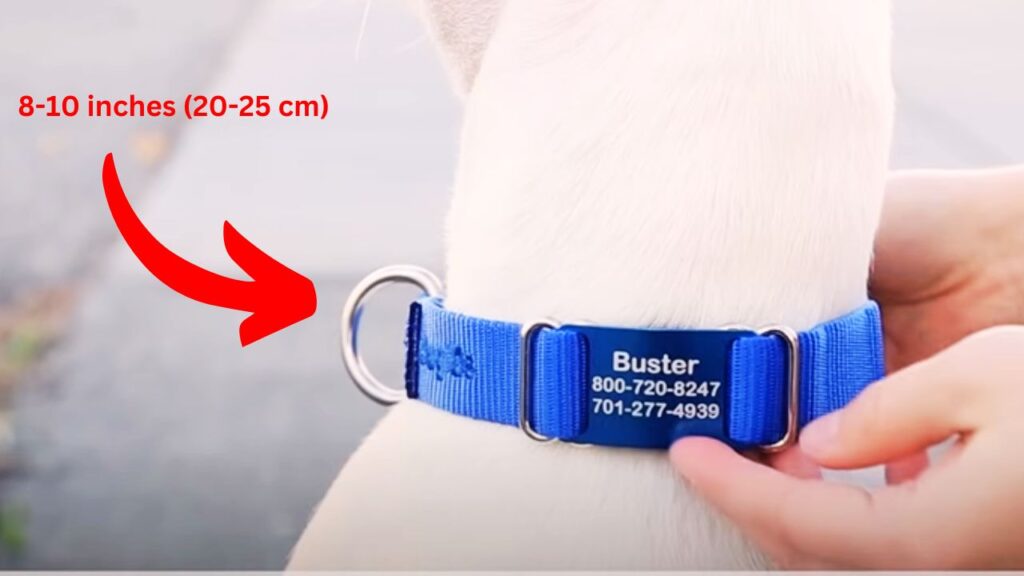
- Size Range: 8-10 inches (20-25 cm) for young puppies, extending as they grow.
- How to Use: Check the fit every 2-3 weeks to ensure it is not too tight or loose.
These collars are lightweight and gentle, making them comfortable for puppies during early training sessions. Learn about the size collar for an American Eskimo to ensure a perfect fit and comfort for your dog.
4. Harnesses: A Safer Alternative
Because of their small size and delicate necks, many Shih Tzu owners prefer harnesses for walks. Harnesses distribute pressure evenly across the chest and back, preventing strain on the neck.
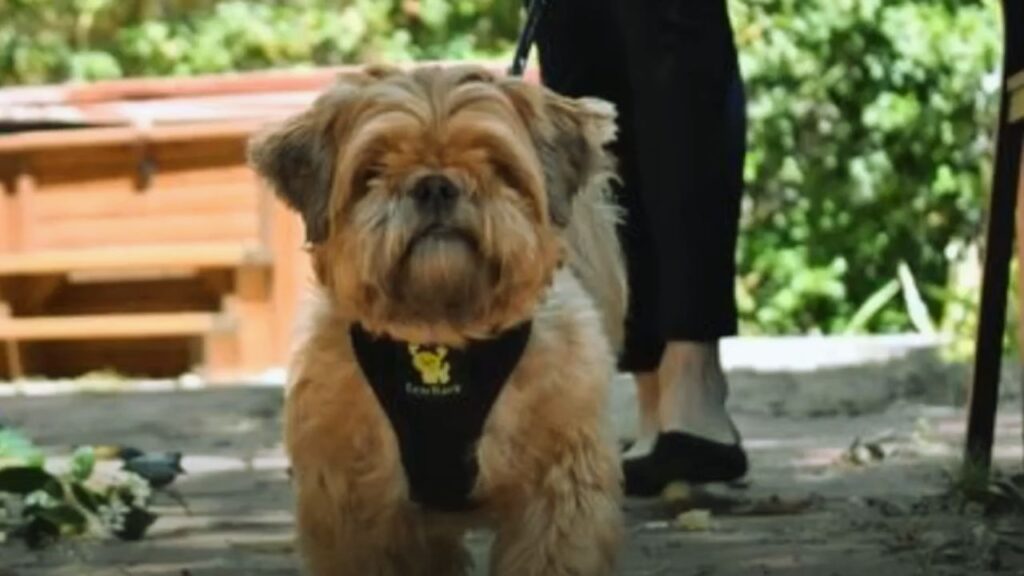
- Size: Measure the chest circumference and add 2 inches for a comfortable fit.
- Pro Tip: Pair a harness with a flat collar for ID tags to ensure your dog is always identifiable.
How to Measure Your Shih Tzu for a Collar
A well-fitted collar is essential to ensure your Shih Tzu’s comfort and safety. Follow these steps to measure your dog accurately:

- Use a Soft Tape Measure: Wrap it around the thickest part of the neck, just above the shoulders.
- Add 1-2 Inches: This ensures the collar won’t be too tight, allowing for comfortable movement.
- Check the Fit: After putting the collar on, two fingers should fit comfortably between the collar and your dog’s neck.
Example Measurements:
- Puppies: 8-10 inches (20-25 cm)
- Adult Shih Tzus: 10-14 inches (25-36 cm)
Step-by-Step Guide: How to Put Collars on Shih Tzus
Step 1: Choose the Right Collar
Select a collar that matches your dog’s needs—flat collars for daily use, breakaway collars for safety, or adjustable collars for growing puppies. Discover why Afghan Hound collars are wide by exploring the unique characteristics of this breed and how wide collars enhance their comfort and style.

Step 2: Introduce the Collar Gradually
Let your Shih Tzu sniff and explore the collar before putting it on. This helps reduce anxiety, especially for puppies or dogs not accustomed to collars.
Pro Tip: Offer treats or verbal praise to create positive associations.

Step 3: Place the Collar Around the Neck
Gently place the collar at the base of the neck, ensuring it is not too high near the throat.

Step 4: Adjust the Fit
Tighten the collar so it fits snugly but does not choke. Use the two-finger rule to check for proper fit. Find out what style dog collar is best for hounds to ensure comfort and safety for your furry friend.
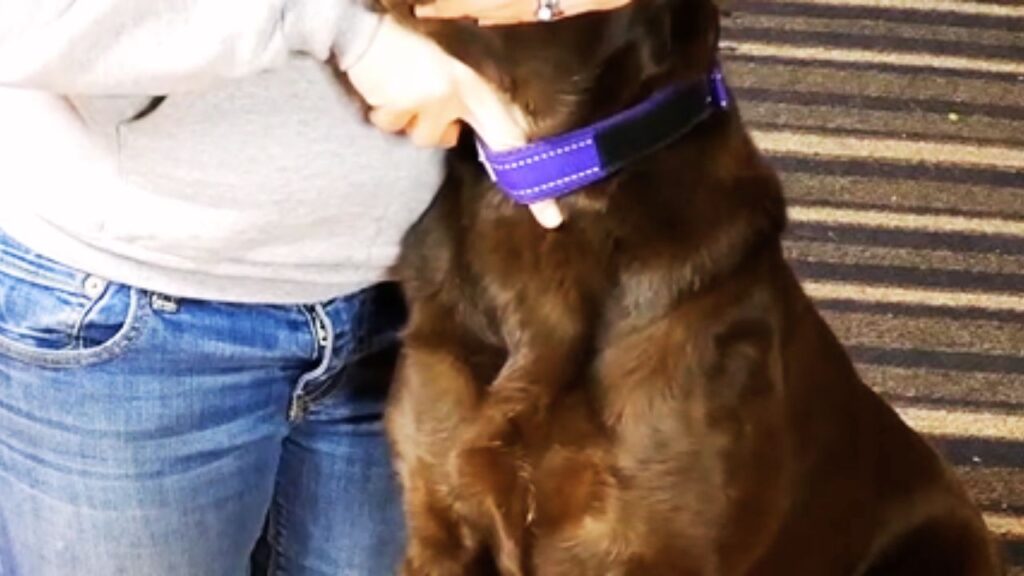
Step 5: Monitor for Discomfort
Watch for signs of discomfort, such as scratching or attempting to remove the collar. If necessary, readjust the fit or try a different type of collar.

Common Mistakes to Avoid
- Using Collars That Are Too Tight: This can cause discomfort and breathing issues.
- Leaving Collars On Indoors: Remove collars indoors to prevent tangling and skin irritation.
- Ignoring Size Adjustments: Puppies grow quickly, so collars need regular adjustment.
- Using Heavy or Bulky Collars: Shih Tzus are small dogs, so collars should be lightweight.
- Skipping Identification Tags: Always attach an ID tag to the collar for safety.
Key Insights and Statistics
- Average Collar Size for Adult Shih Tzus: 10-14 inches (25-36 cm).
- Frequency of Collar Adjustments: Every 2-3 weeks for puppies, every 2-3 months for adults.
- Lost Dogs with ID Tags: Dogs with ID tags are 38% more likely to be returned to their owners.
- Training Success with Lightweight Collars: 70% of owners report improved leash behavior with properly fitted collars.
Training Tips: Helping Your Shih Tzu Get Comfortable with Collars
For some Shih Tzus, wearing a collar can feel unfamiliar or uncomfortable, especially if they are new to it. Training them to accept a collar takes patience and consistency. Follow these tips to make the transition smoother:
1. Start Early and Slow
It’s best to introduce a collar when your Shih Tzu is still a puppy, around 8-10 weeks old. However, older dogs can also adapt with gradual training. Start by letting your dog sniff the collar before placing it on them for short periods, like 5-10 minutes a day. Gradually increase the duration until they seem comfortable.
Pro Tip: Use positive reinforcement (treats and praise) each time you put the collar on. This creates a positive association with wearing it. The ideal size collar for English Springer Spaniel typically ranges from 14 to 20 inches, depending on the dog’s age and neck size, ensuring a comfortable and secure fit.
2. Distract Your Dog with Fun Activities
When putting a collar on for the first time, engage your dog in activities they enjoy, such as playing with toys or offering their favorite treat. Keeping their focus elsewhere helps them forget the collar is on. This method works particularly well for anxious dogs.
3. Avoid Tightening the Collar Too Much
Ensure the collar fits comfortably from the beginning. If the collar is too tight, your dog may become distressed and associate the collar with discomfort. Use the two-finger rule for a snug but comfortable fit.
4. Watch for Signs of Discomfort
Some Shih Tzus may scratch at the collar or try to remove it initially. This is normal, but if the behavior persists, check the fit or switch to a softer, lighter collar. Long-haired Shih Tzus may also need their collars adjusted more frequently to prevent hair from tangling.
5. Use Short Training Sessions
Keep the training sessions short, around 5-15 minutes, to avoid overwhelming your Shih Tzu. Consistent daily practice will help them become comfortable wearing a collar without stress or resistance.
Conclusion: Ensuring the Right Fit for Your Shih Tzu
Wearing the right collar is essential for your Shih Tzu’s comfort and safety. With their delicate necks and long hair, choosing a lightweight, properly sized collar is crucial to prevent discomfort and tangling. Whether you opt for a flat collar, breakaway collar, or harness, the key is to use these tools responsibly and adjust them regularly. Hope so, now you know how to wear collars on Shih Tzu?
By measuring carefully, checking the fit, and monitoring your dog’s comfort, you’ll ensure that your Shih Tzu remains safe and happy both at home and during walks. With proper care and attention to size, wearing a collar will become a positive experience for your furry friend.
Do you have any experiences or tips for using collars on Shih Tzus? Share your thoughts in the comments below! The recommended size collar for an English Cocker Spaniel usually ranges from 12 to 18 inches, providing a snug and comfortable fit for your dog.

